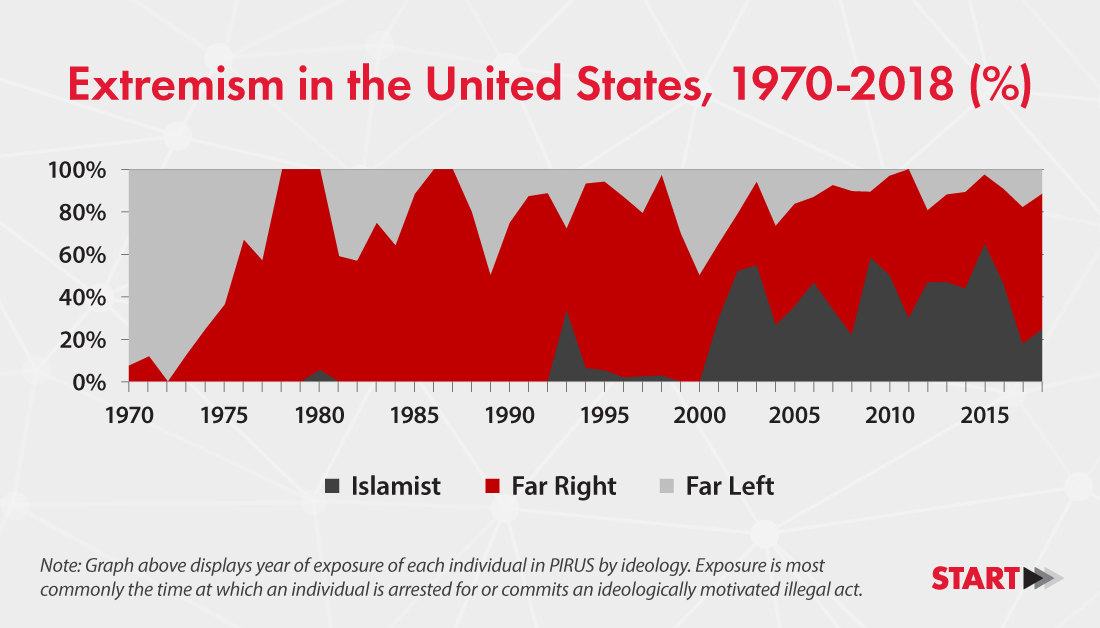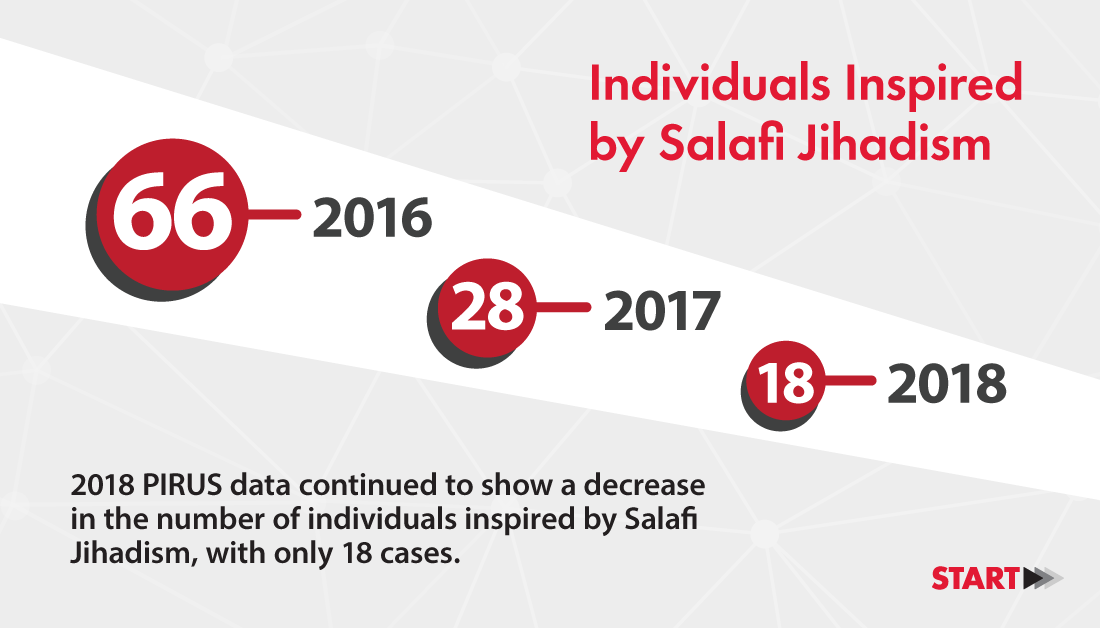START has released a new research brief and an update to its Profiles of Individual Radicalization in the United States (PIRUS) dataset, which now includes information on 2,226 Islamist, far-left, far-right and single-issue extremists who have radicalized to violent and nonviolent extremism in the United States from 1948 through 2018. The data is freely available on START's website and allows users to explore the radicalization trajectories of individuals from far-right, far-left and Islamist ideologies.

The brief draws on the full dataset and illustrates the important differences that exist across ideological groups, as well as those which distinguish violent from nonviolent extremists. Among the findings:
- 2018 PIRUS data continued to show a decrease in the number of individuals inspired by Salafi Jihadism, with only 18 cases. That is down from 28 in 2017 and 66 in 2016.
- Far-right extremists make up the largest ideological group in the database (n=977), followed by Islamist extremists (n=511).
- Individuals who are female, older, married, have children and have stable employment histories are significantly less likely to plan, prepare for or engage in acts of violence than those who are young, male, unmarried, unemployed or under-employed.
- Military experience, online radicalization, and affiliation with extremist groups do not appear to be significantly related in either direction to violent extremism.

